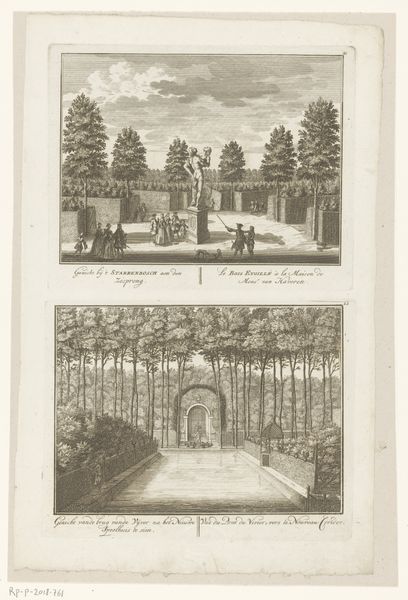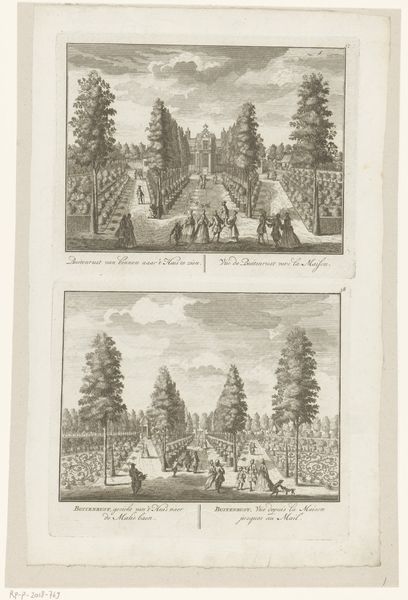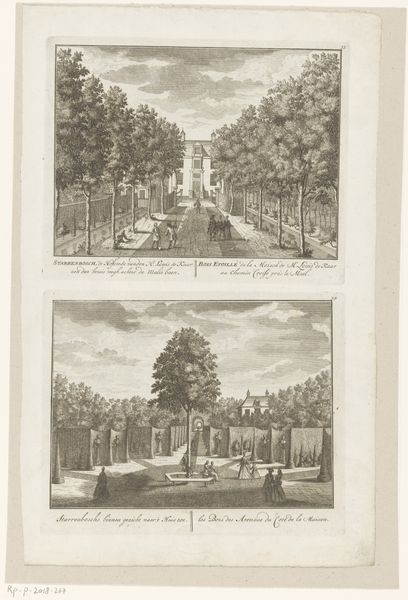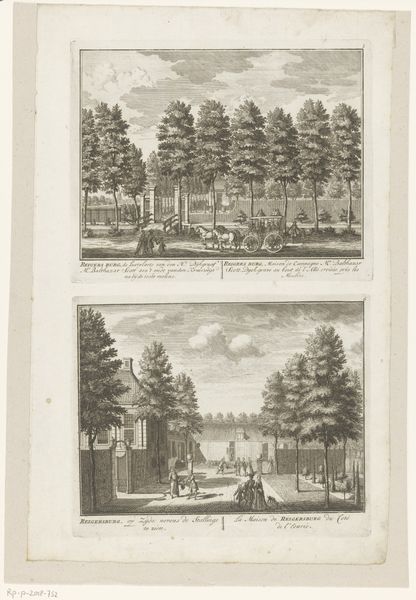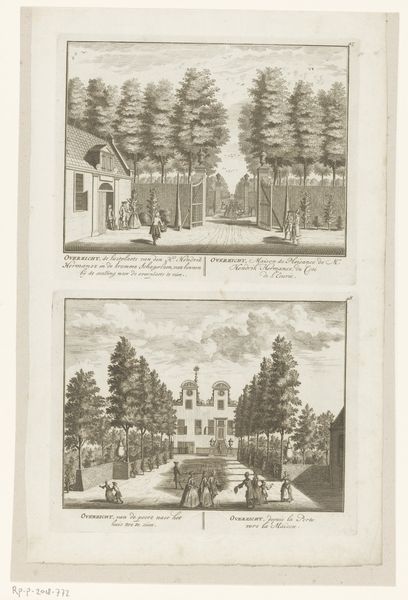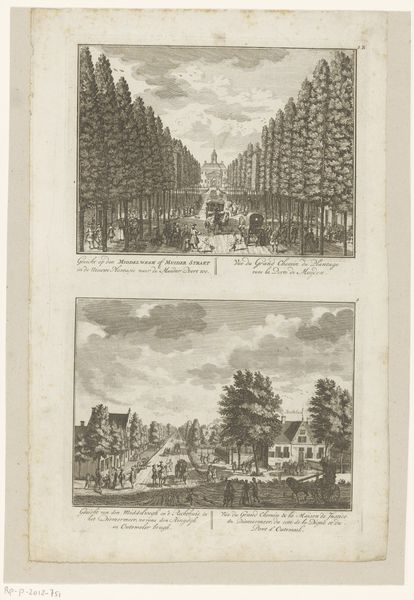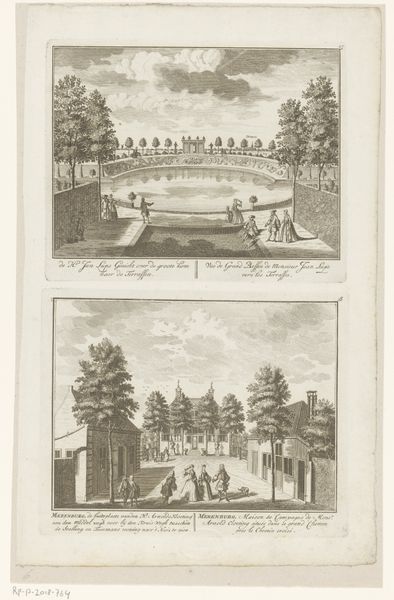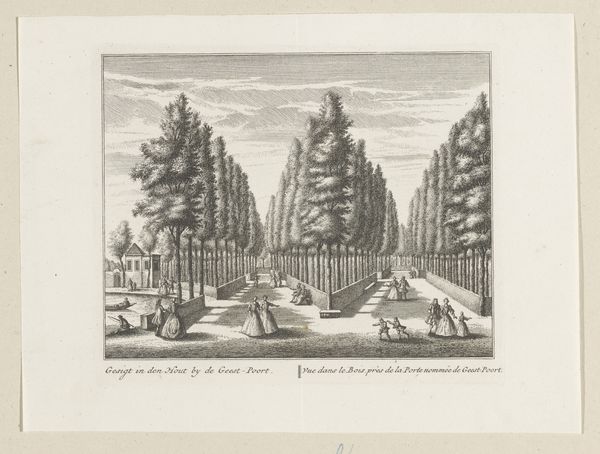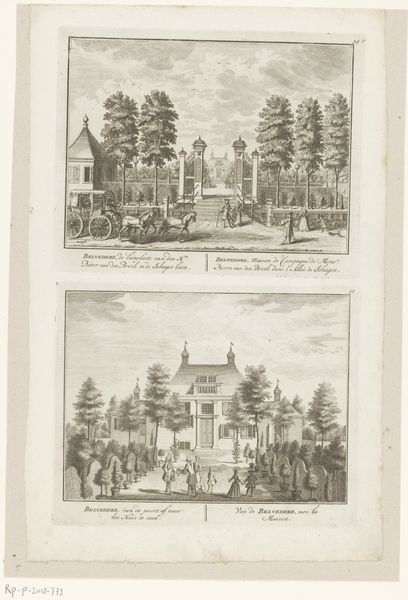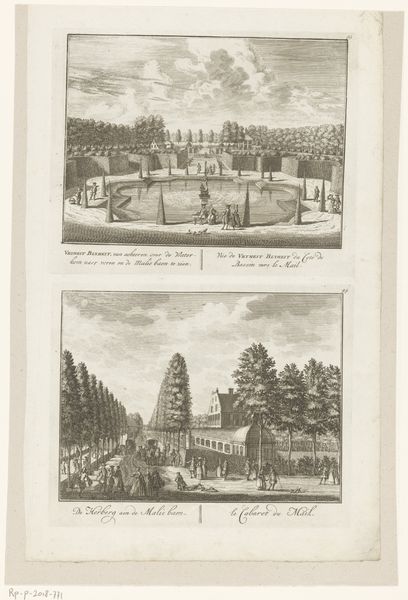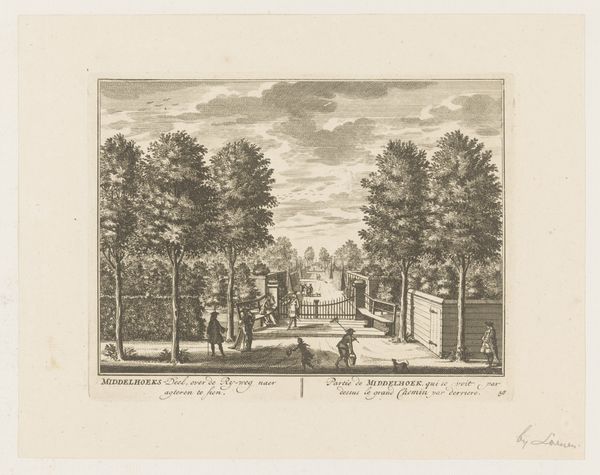
print, engraving
#
baroque
# print
#
landscape
#
cityscape
#
engraving
Dimensions: height 172 mm, width 211 mm, height 173 mm, width 215 mm
Copyright: Rijks Museum: Open Domain
Editor: So, here we have "Twee gezichten op buitenplaats De Vergulde Eenhoorn," created sometime between 1725 and 1768, currently housed at the Rijksmuseum. It's an engraving, and it depicts two views of what appears to be a formal garden. There's a real sense of constructed space here. What can you tell me about it? Curator: As a materialist, I’m drawn to consider how this print reveals the social context of landscape design at the time. Look closely at the precise lines and calculated perspectives, elements achieved through the labor-intensive engraving process. It wasn’t just about creating pretty scenery. It reflects an ideology of control over nature, mirroring social hierarchies. How does the very act of rendering a space in print amplify that control, do you think? Editor: I see what you mean. Because the image, the print itself, can then be circulated and reproduced… kind of like mass-produced status? It makes me wonder about accessibility - who could afford prints like these, and what did it mean to own a piece of this idyllic scene? Curator: Exactly. These prints weren't merely decorative; they functioned as commodities. The paper, the ink, the printing process - each aspect involves labor and consumption, contributing to a specific economy. Also note the precise geometry. These forms didn’t emerge naturally; people shaped the earth to produce this designed artifice. Think of all of the gardeners and land shapers laboring on these landscapes. What does this labor hide, would you suggest? Editor: Hmm, it seems to obscure the work involved in maintaining this 'perfect' nature. This perfectly planned image serves as a form of social aspiration and maybe propaganda. Curator: Precisely. Understanding its materiality helps reveal a nuanced narrative of class, labor, and control embedded within seemingly simple landscape views. This makes one see prints not just as aesthetic objects, but also social artifacts with encoded meanings. Editor: This reframing really does bring to light aspects I had completely missed, thank you.
Comments
No comments
Be the first to comment and join the conversation on the ultimate creative platform.
